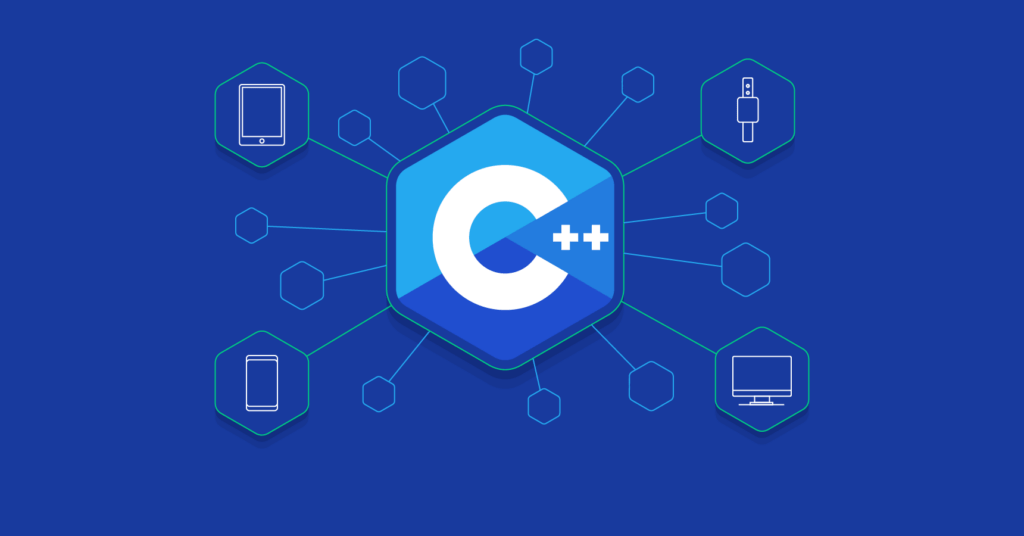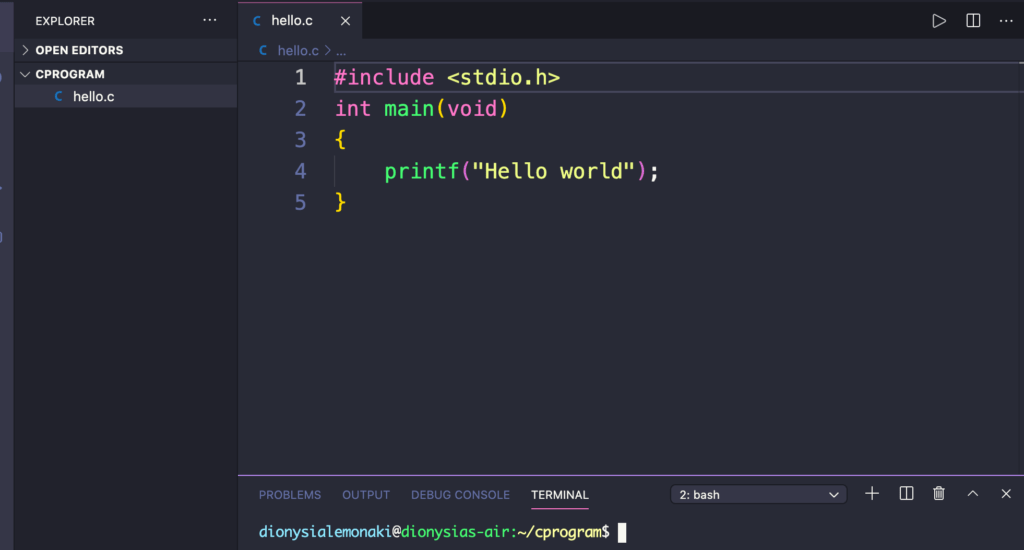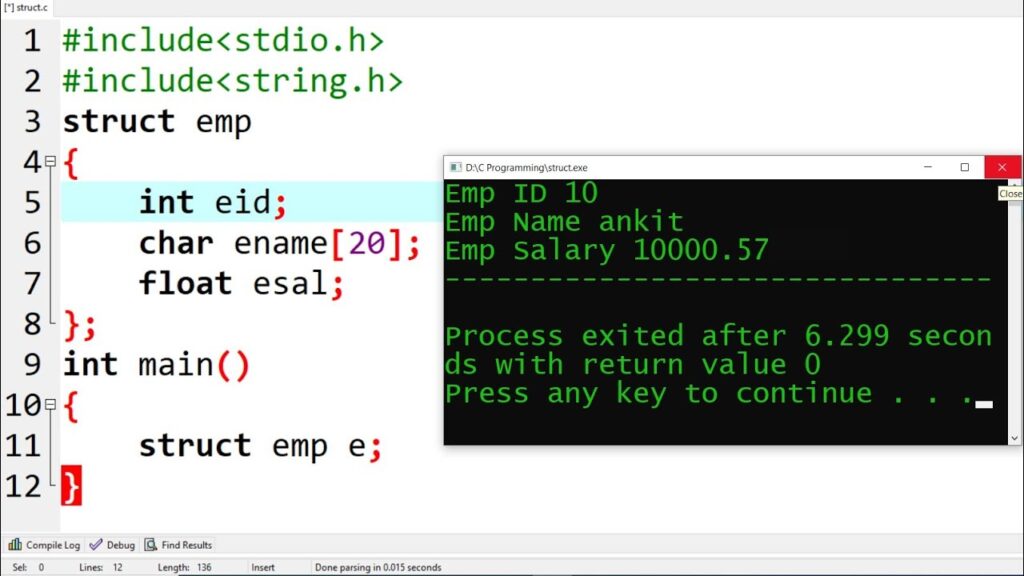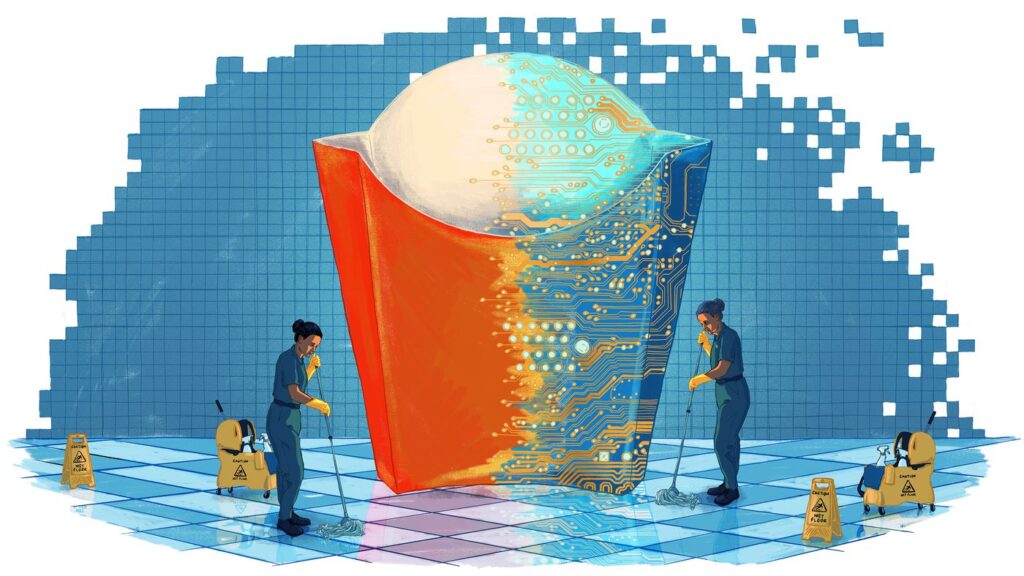Software engineers often learn more than one programming language over the course of their careers. This helps them build and manage applications and websites. C is a general-purpose programming language that can be used to learn many other programming languages. There are a number of languages that are better for writing certain kinds of code than others, but knowing C is more useful in general. But what is C?
Learning about the definitive answer to such a question can help you decide if learning it is right for your career. In this article, we’ll talk about what C programming is, how it can be used, and some of the many benefits you can get from learning this basic programming language. We’ll also explain how C works in a simple way.
What is the Programming Language C?
C is a procedural programming language which uses a static system. C also lets you do dynamic programming, in addition to structured programming, recursion, and lexical variable scoping. The language was made with structures that make it easy to move instructions to different kinds of hardware. It has been used for a long time in programs that used to be written in assembly language.
The C programming language is a machine-independent language that is mostly used to make a wide range of applications and operating systems like Windows, as well as other complicated programs like the Oracle database, Git, the Python interpreter, and games. It is also thought of as a foundational language for learning other programming languages. Operating systems and a wide range of application software for different computer architectures are examples of such applications. These architectures include everything from supercomputers to programmable logic controllers (PLCs) and embedded devices.
History
Dennis Ritchie, a brilliant computer scientist who worked at Bell Laboratories in 1972, created a new programming language called “C”. It was made with the programming languages “ALGOL,” “BCPL,” and “B”. All of these things are part of the “C” programming language, as well as many other ideas that make it different from other languages.

In the 80s, as computers got more powerful, so did the need for a programming environment that was easier to use. This goal led programmers to use C to make their own compilers, which led to the creation of new programming languages. Languages like C++ and Java, which were both based on C, made object-oriented programming easier. This style of programming makes it easier for a programmer to reuse code.
“C” now works on a wide range of hardware and operating systems. As the language changed, many different versions of it came out. Engineers often had trouble keeping up with the latest version because the systems were running older versions. In 1989, the American National Standards Institute (ANSI) set up a commercial standard for the C language. This was done to make sure that the language stayed standard. In 1990, the International Organization for Standardization (ISO) gave it a seal of approval. ANSI C is another name for the programming language “C.”
Recommended reading: Top 7 Web Development Languages To Use In 2022
Uses
The language is used to write the code for Windows, Linux, and Mac operating systems. Most kernel development, which is also called the core of an operating system, is done in the programming language C. The kernels of mobile phone operating systems are also written in this language. Because of this, the mobile operating systems that run the smartphones we always have with us are based on the C kernel.
Mobile application languages are things like C++, C#, and Objective-C, which are all based on C and are used to make apps for phones and the web. In terms of databases, a lot of well-known databases, like MySQL, Oracle Database, and Microsoft SQL Server, are made with C.
3D movies, animation, and computer graphics all need programs that run very quickly and get a lot done, which are mostly built on C. For embedded systems, C is used to code and program things like MP3 players, alarm clocks, radios, microwaves, coffee makers, and sensors in cars.
Top 5 Features of C
C is a programming language that uses both the structured and procedural paradigms. Because of its history of success, its ability to change and its power, as well as the many features it has, it can be used for many different things. We will proceed to list some of them below.
1. Memory Management
In the C programming language, memory can be given out either statically or on the fly. When we use dynamic allocation, we can’t tell at run time how much space our data structure will need. If, on the other hand, we decide to use static allocation, we will have to set aside a certain amount of memory before we can start running the application. Because of this feature, we have more flexibility than we would have with other programming languages such as Java, in which we are required to declare all variables as final.
When you use dynamic memory allocation, you can share memory while the program is running. For example, if you don’t have the slightest idea of how much memory your program’s objects need, you can still run a C program while allocating memory even though you don’t have the slightest idea of how much memory your program’s objects need.
2. Simple Testing & Debugging
Since C is a strongly typed programming language, it is expected that data structures and variables will be declared before they are used. This means that the compiler can make sure that these defined types are used in the right way and find a number of problems while they are being compiled.

Structures, which are user-defined data types that can be used to group data and code in a modular way, are also a part of this programming language. After that, you can work on each of these modules on its own, and then put them all together to make a program that is both smarter and bigger. This structure makes it much easier to find bugs, get rid of them, and keep the software up to date. All of these things help increase testing productivity.
3. Easy to Understand
Programmers who are thinking about switching from another language to C often say that one of the main reasons is that it is easy to use. C is a language that can be used on many different platforms, and applications written in it run much faster and work much better. Because of this, C is a much easier programming language to learn than any other.
C is a simple programming language with easy-to-understand ideas because it doesn’t have a lot of keywords or symbols. Also, you don’t need to know much about computer science to start programming in it. You just need to look for online tutorials, read through them, and then start making your own scripts. Also, the C programming language uses both functions made by the system and functions made by the user.
Recommended reading: Top 5 Ios App Development Languages: How to Choose the Right One?
4. Portable
C is also very portable and doesn’t need to be run on a specific machine. Even though it’s close to the machine and can access its lower-level functions, that doesn’t change the fact that it’s far enough away from these parts to let code be moved.
It is a universal programming language, which means that applications written in it can be compiled and run on a wide range of platforms, architectural styles, and machine types without losing any performance. C is a great choice for developing systems and programs where performance is very important because of this.
5. Rich Libraries
In C language programs, built-in functions can be made by the system or by the user. There are a lot of built-in functions in C language programs. In C Compiler, a user-generated or user-defined function is a function that was made by the user to meet their specific needs. A user-generated or user-defined function could be one of several general functions that are used to make a program.
10 of C’s Basic Commands
The following is a list of the fundamental commands utilized in the C programming language.
1. #include
This is the main function that is done to the header file before the program is built. It preprocesses standard input and output header files, like stdio.h, from the C library repository. This is done before the actual compilation of the program.
2. int main()
As with most programming languages, this C statement is the main function, which is where the program starts to run. After the first main instruction () has been done, the rest of the methods and functions will be done.
3. {
Curly braces are a type of bracket that can be used in any computer language, not just C. Their curliness is what makes them stand out. This shows that the definition of a method or function is about to start.
4. /* explanation of C code */
The text between the /* and */ tags will be treated as comments, which means it won’t be run or compiled. This is done so that the coder has a complete understanding of the code and how it should be used.

5. Printf
When this C command is run, the output is shown on the screen of the console.
6. Getch()
This function is currently used to wait for the user’s input.
7. return 0
When the C program or main function is done, this C function will send 0 back to the function that called it.
8. }
These curly braces are what closes the block that represents the function or method.
9. //
Single-line comments are used in more than just the C programming language. They are also heavily featured in others.
10. return
This function is in charge of giving back the results of running the code.
Recommended reading: Top 5 Best Android App Development Languages for 2022
What is the Future of C?
C is a programming language that has been around for many years and is still used in many different ways. There is no doubt that the languagewill still be used for a long time to come. Even though many different programming languages have come and gone, C has stayed a popular choice for many developers.
C can be used for a wide range of things, from low-level system programming to high-level application development. This is one reason why it is still so popular. C is also used a lot because it can be changed to fit different needs. Since C is not too hard to learn, it is a great choice for people who are just starting out.

Even though the letter C is used a lot, there is no guarantee that it will be around for a long time. Languages come and go, and it will always be possible for new technologies to replace older ones. Even so, it seems likely that C will remain a popular language for many years to come.
Career Path in C
Companies that focus on embedded programming, system programming, and compiler design, among other related areas, are always looking for talented C experts and offer great opportunities for career growth. This technology is here to stay, and for the foreseeable future, it will continue to offer great job opportunities. Because of this, jobs that involve working with C programming can be found in many different fields, from making software to designing hardware.
If you want to learn how to program in C, one of the first things you should do is find a reliable source that can teach you the basics of the language. Once you have a solid base, you can start to improve your skills by making simple programs. Another good idea is to join online discussion groups or communities that are all about the C programming language. There, you might learn tips and tricks from other people who are also having trouble with it. Last but not least, if you get stuck while learning C programming, don’t be afraid to ask for help. Many people are willing to teach beginners the language.
FURTHER READING: |
1. HTML5 Tutorial: The Basics |
2. What Is Node JS and How does It Work? |
3. What Is Python Programming? The Best Programming |
Conclusion
People usually think of C as the language that other programming languages are built on. C is a great choice for making embedded systems and the cores of operating systems because it is portable and works well. It can also be used to do complicated things with data.
This article served as a guide to What C Is. Additionally, please don’t hesitate to get in touch with us if you have any questions regarding the language, are interested in working with Designveloper on C, or wish to speed up the web development process.























